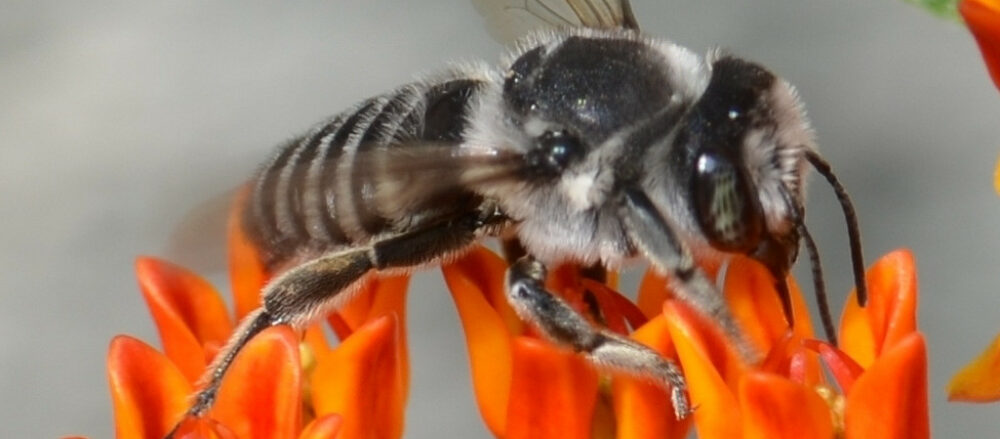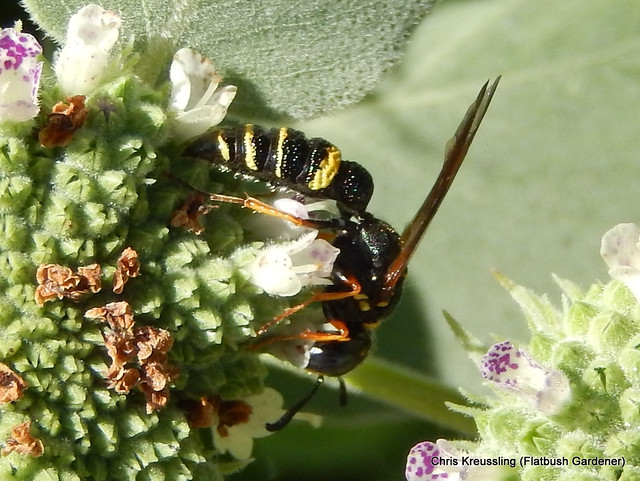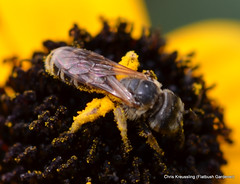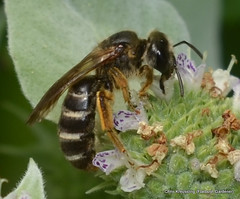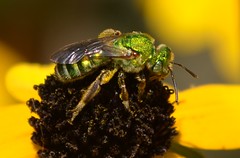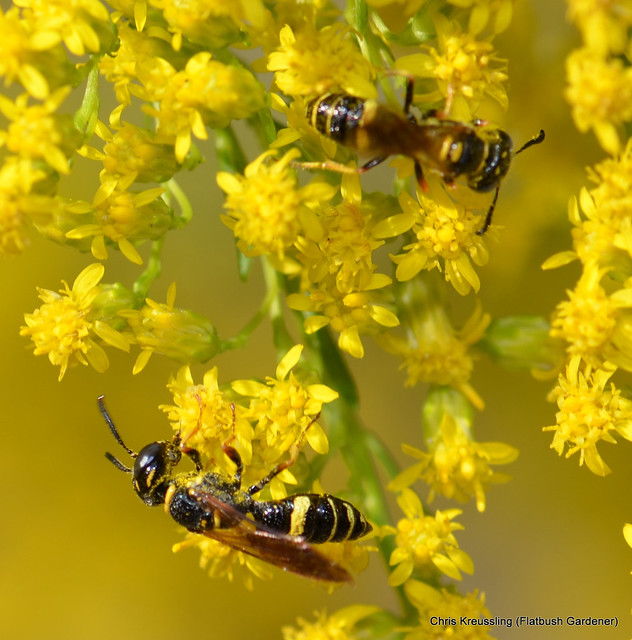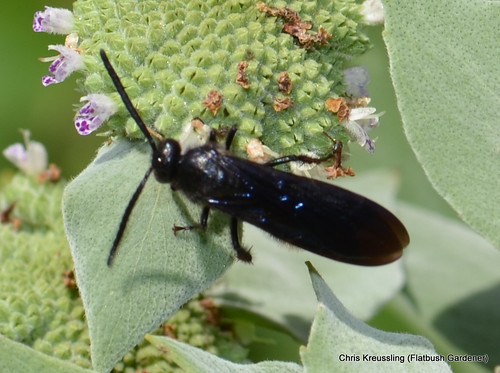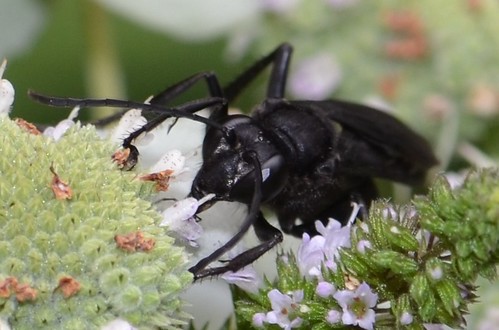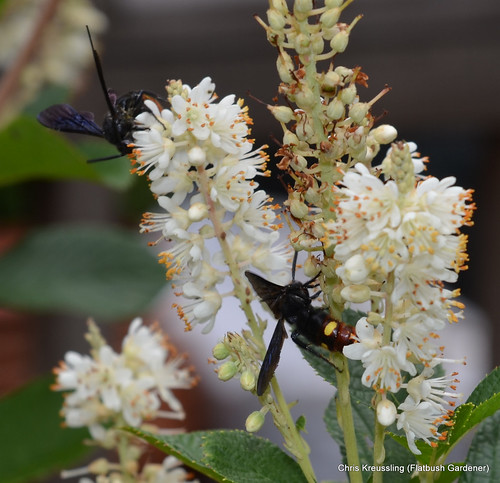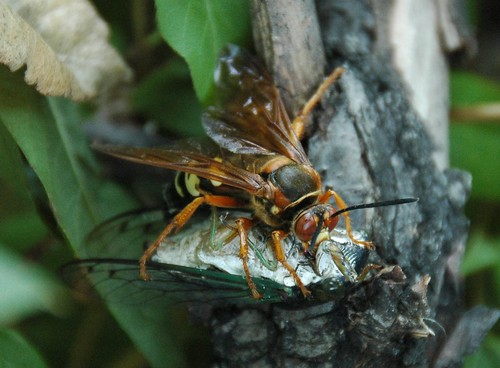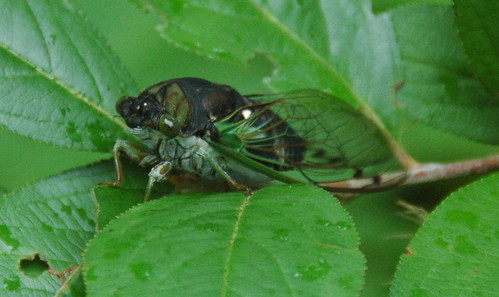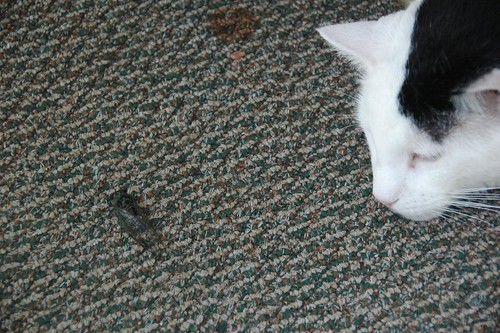Setting aside for a moment the less-than-appealing staging, this is a beautiful creature.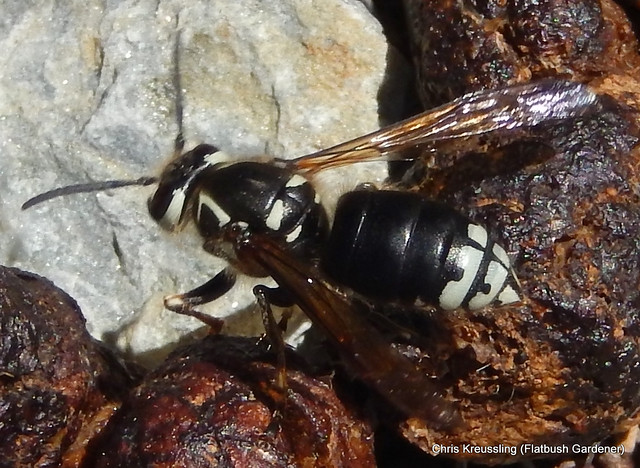
This is Dolichovespula maculata, the Bald-Faced Hornet. Despite its prevalence, this is my first direct encounter with one.
I’m more familiar with its signature creation: its nest. Here’s a huge one I found a few years ago high in one of the Lilacs at the Brooklyn Botanic Garden. It was March; this one was left over from the previous year.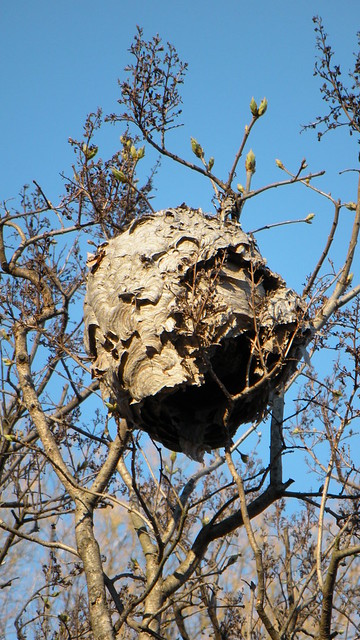
They typically nest high in trees, or large shrubs like the Lilac above. Sheltered by summer foliage, and camouflaged the color the bark, they’re difficult to spot. We’re more likely to discover them when they fall. Here’s one that was downed when a tornado swept through Brooklyn in August 2007 …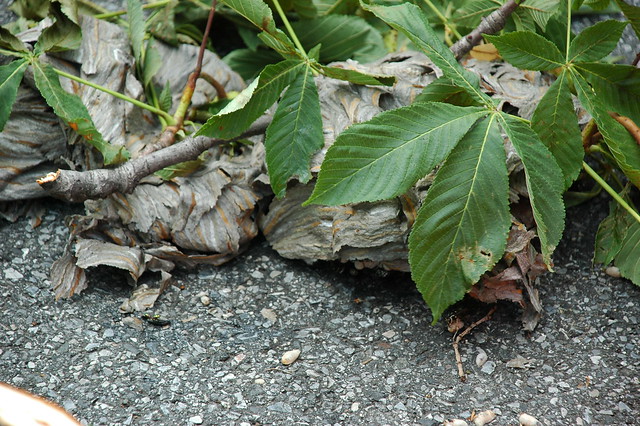
… and flagged – if mislabelled – by a helpful neighbor.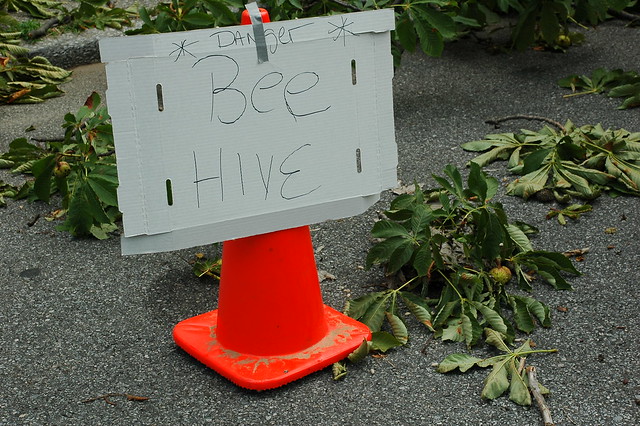
Earlier in the year, the nests are much smaller. New queens emerge, and create new nests, each year. Here’s one Matthew Wills and I came across during our Magicicada hunt in Staten Island.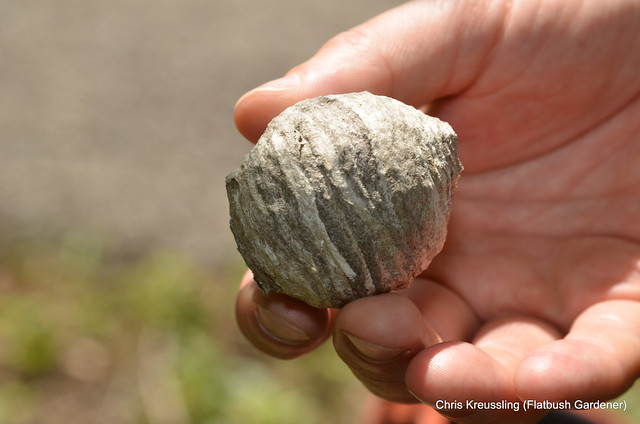
The “setting” of the opening photo is canine dung, aka “dog poo.” I prefer to think of this as an image from a photo shoot of an aspiring hipster photographer (me) of a model wearing haute couture (hornet) in a sewer (dung).
Much more glamorous now, ain’t it! Except this hornet is too zäftig to be a modern model.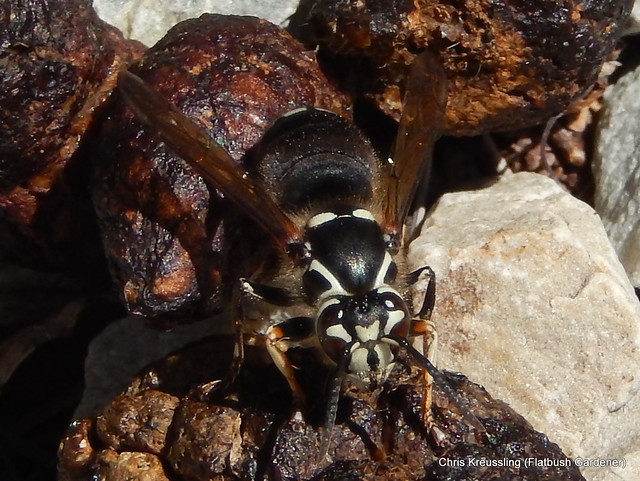
I observed this individual scrambling over, flying off, then returning to such, uh, settings repeatedly. In between visits from the hornet, each was buzzing with flies. As the horned honed in, the flies flew off.
I think this explains this hornet’s interest. The adults are largely vegetarian, eating nectar and fruit. They capture and pre-chew flies and other insects to food to their larvae. This is the same child-rearing strategy used by a majority of bird species, most of which need insects to feed their young, but are largely vegetarian as adults.
Far from being a “pest” (in human terms) this is a beneficial (in human terms) insect. Carnivorous wasps such as this one help keep insect populations in check. A diversity of species – emerging and active at different times of the year, occupying different habitats, and specializing in different prey – ensure that no one species of insect will get out of control, at least not for long. The better able we are to at least tolerate, if not celebrate, less charismatic species such as wasps and hornets, the more we will be able to enjoy the spaces surrounding our homes, and the healthier will be our interactions with our co-habitants in nature.
Related Content
Flickr photo set
Other Hymenoptera posts
Links
Bald-Faced Hornet (Dolichovespula maculata), BugGuide
Bald-faced Hornet, Dolichovespula maculata, Study of Northern Virginia Ecology
Baldfaced Hornet, Virginia Cooperative Extension
Dolichovespula maculata (Linnaeus, 1763) – Baldfaced Hornet, Biological Survey of Canada
